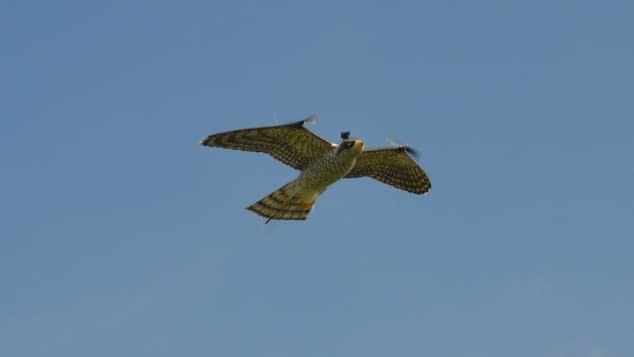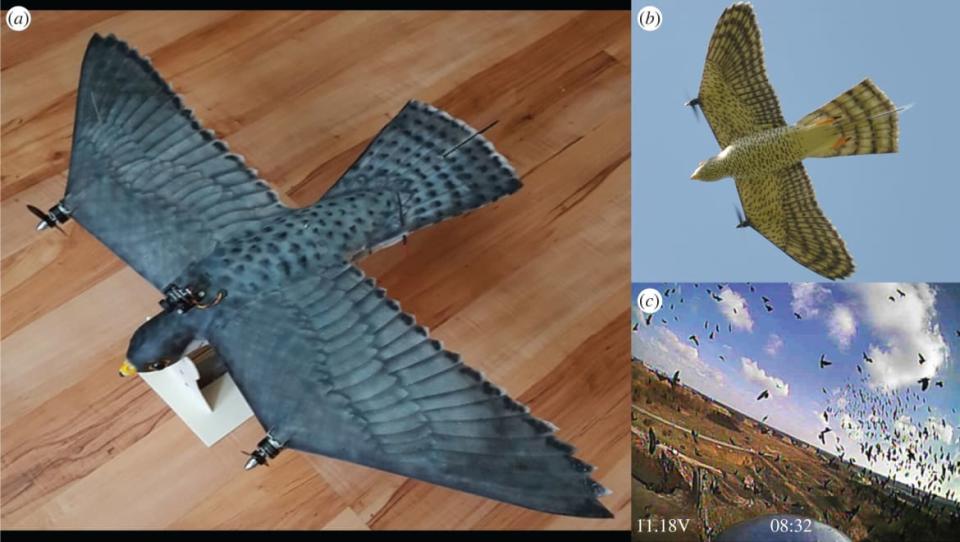This Robotic Falcon Is the Future of Pest Control

A wildlife strike is when an animal (typically a bird) hits an airplane as it’s taking off, flying, or landing. (Think Captain Chesley “Sully” Sullenberger’s “Miracle on the Hudson”) About 16,000 wildlife strikes occur each year in the U.S.—posing an abnormally large risk to pilots and passengers. While most prevention methods involve delaying takeoff or landing until bird activity dies down, it can cause disruptions to already strained flight schedules and systems.
That’s why researchers at the University of Groningen in The Netherlands have created a robotic falcon that they say can scare flocks of birds away for hours. In a study published October 26 in the Journal of Royal Society Interface, the team engineered the drone dubbed RobotFalcon to look and fly like a peregrine falcon—a vicious predator to other birds.
The device performed better than a conventional drone, distress calls, and pyrotechnic deterrence (which is essentially shooting fireworks at the birds). After the field testing concluded, the researchers found that the RobotFalcon also resulted in less habituation—meaning that the wildlife it was scaring away never got desensitized to it.
“In our three months of fieldwork, there was no evidence of habituation of birds to the RobotFalcon,” the study’s authors wrote. “We speculate that the RobotFalcon continued to be effective because of its resemblance in behavior and appearance to a real falcon.”

The RobotFalcon (a), a view from the RobotFalcon's underside during flight (b) and an example of its view during flight (c).
The faux-falcon is made of fiberglass and has been shaped and painted to look like the genuine article. It has a drone propeller attached to each wing that allows it to travel at nearly 50 feet per second. The device even has a camera attached to it to allow its pilot to see where it’s going.
The team conducted field tests for RobotFalcon for 34 days in Workum, The Netherlands. They also ran tests using a conventional drone, distress calls, and pyrotechnics. By the end of testing, they found that the device more often cleared the testing area of birds and kept them away for longer periods of time.
While it’s a promising piece of technology for dealing with a persistent headache for pilots and travelers all over the world, the study’s authors caution that there are still a few hurdles. For one, operating the RobotFalcon requires training. The flights are also limited by a short 15 minute battery life. Weather plays a huge factor too as the device can’t take flight if it's too rainy or windy.
However, it’s a good start to what might eventually become the future of bird strike prevention. Too bad it can’t deal with the thousands of other things that are delaying our flights.
Got a tip? Send it to The Daily Beast here
Get the Daily Beast's biggest scoops and scandals delivered right to your inbox. Sign up now.
Stay informed and gain unlimited access to the Daily Beast's unmatched reporting. Subscribe now.

